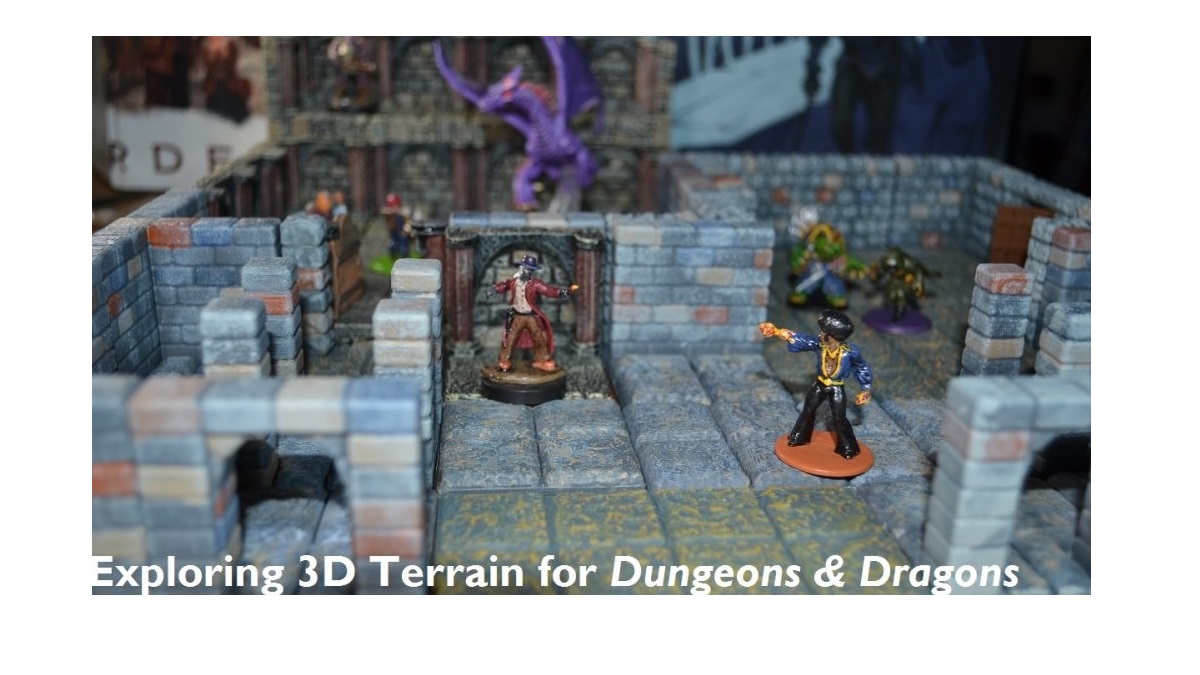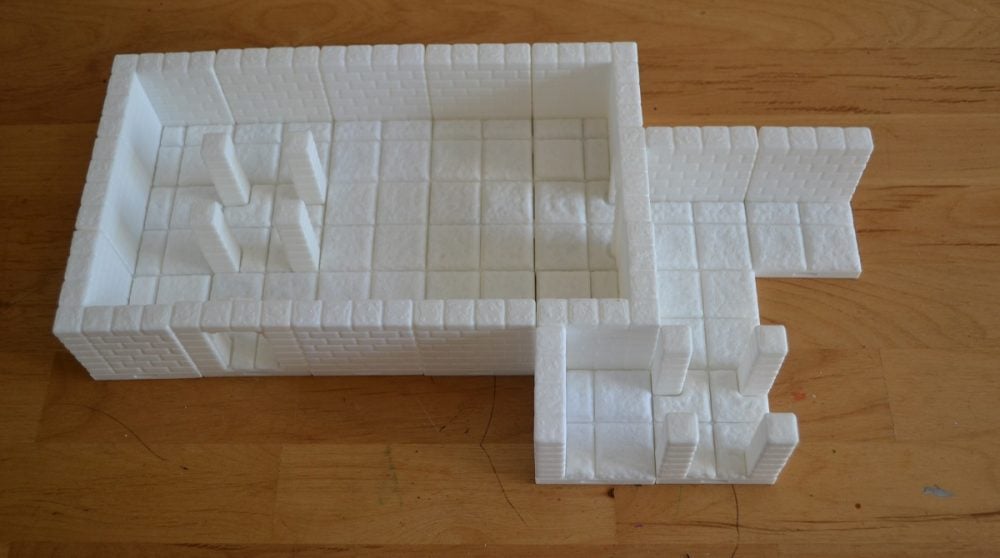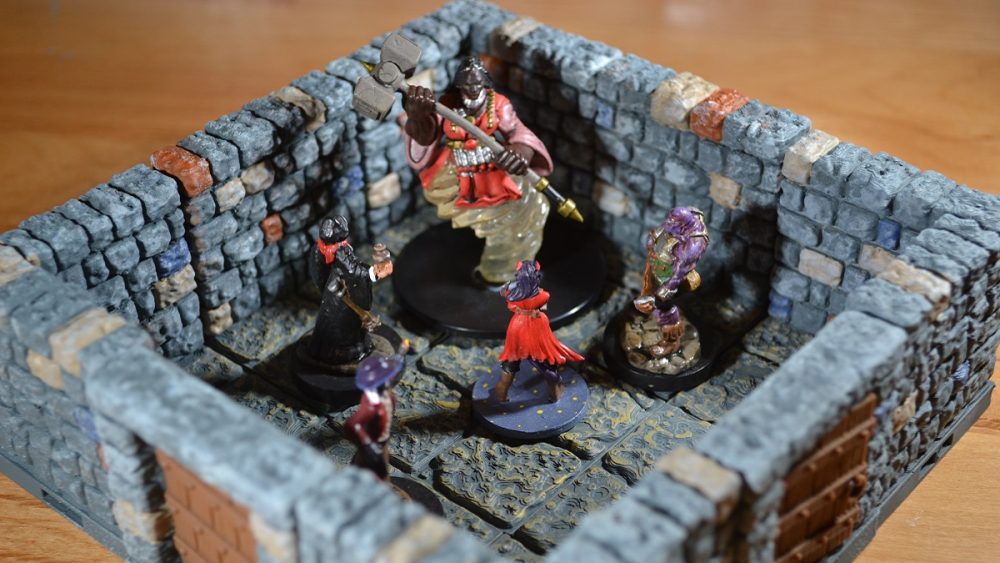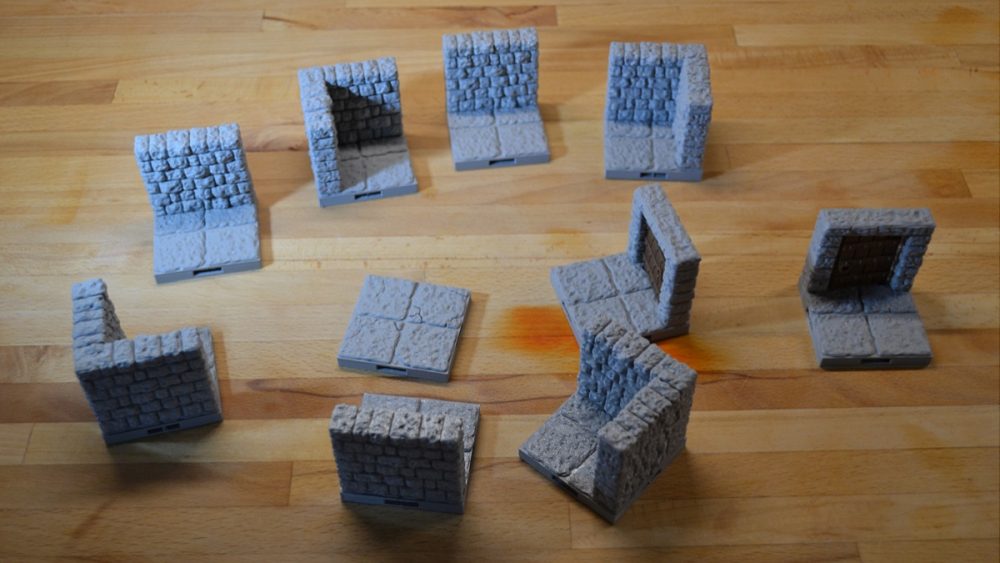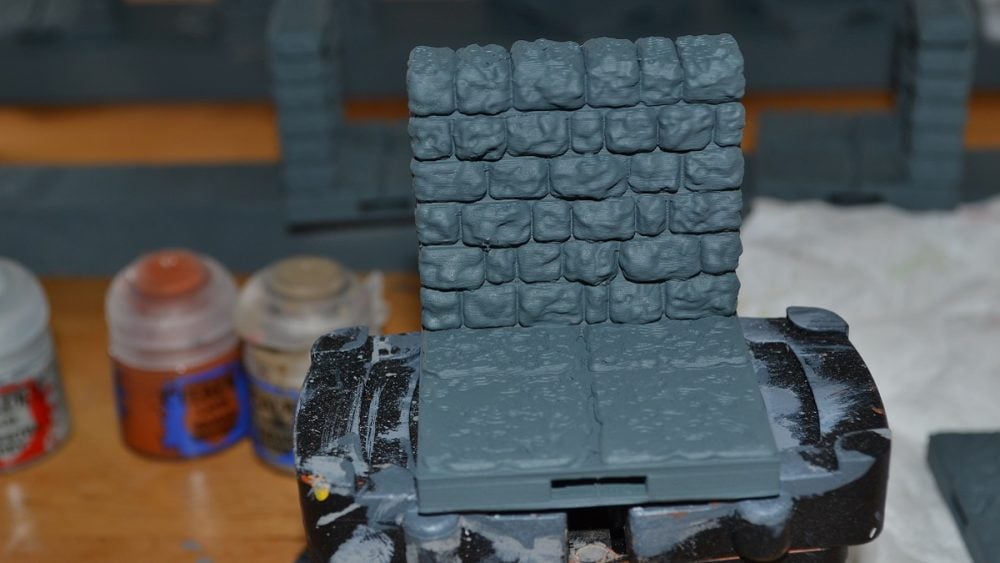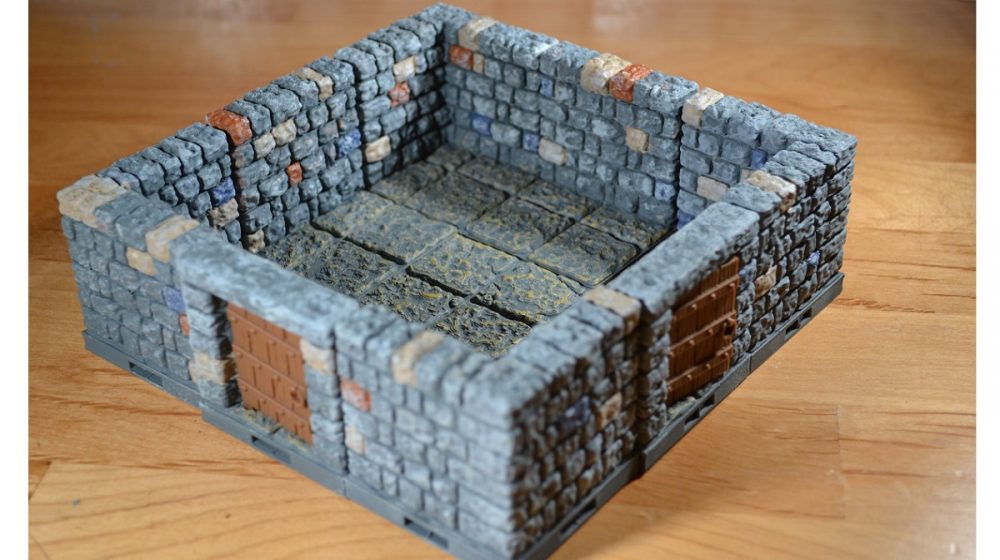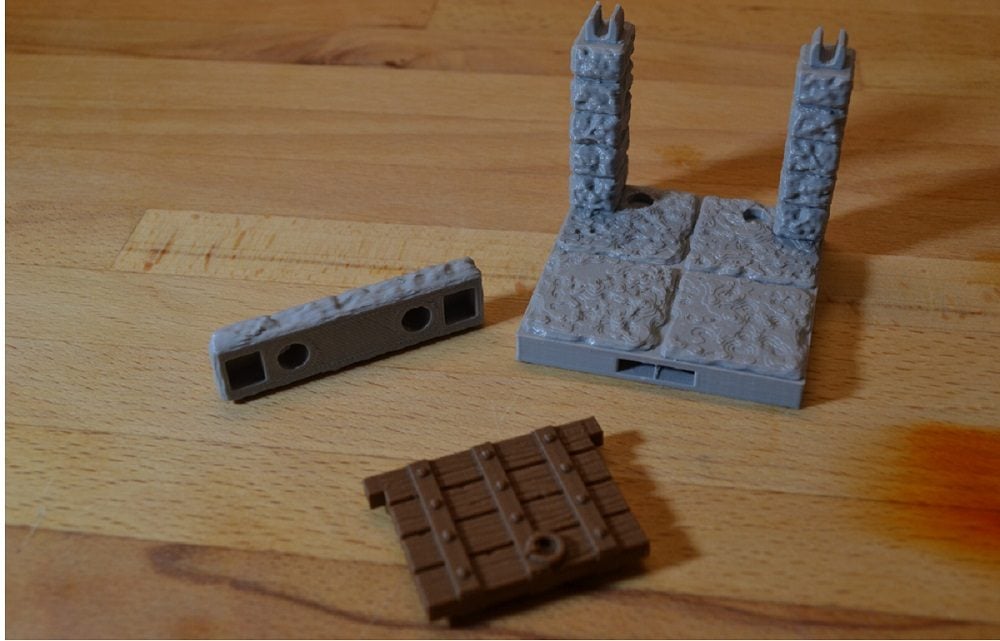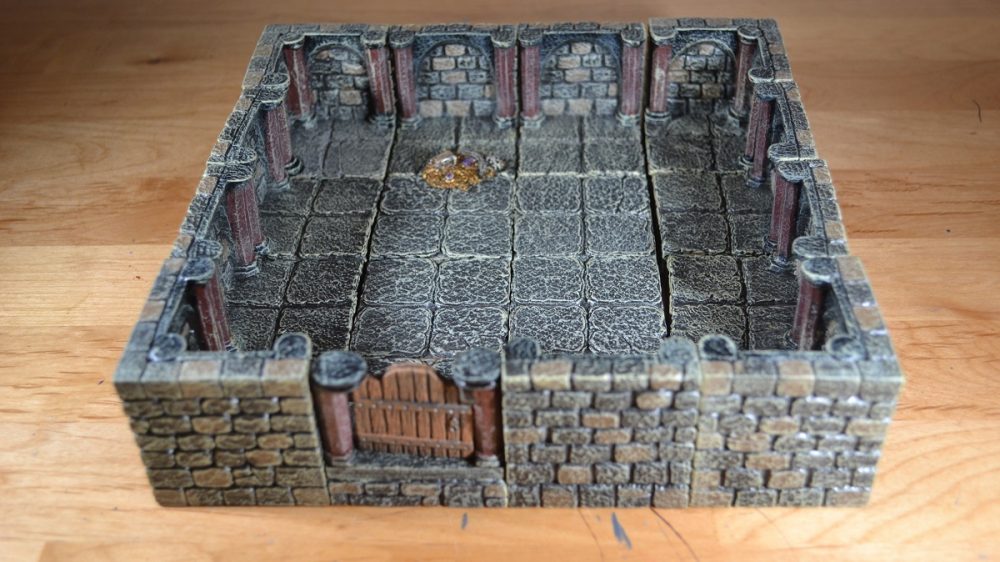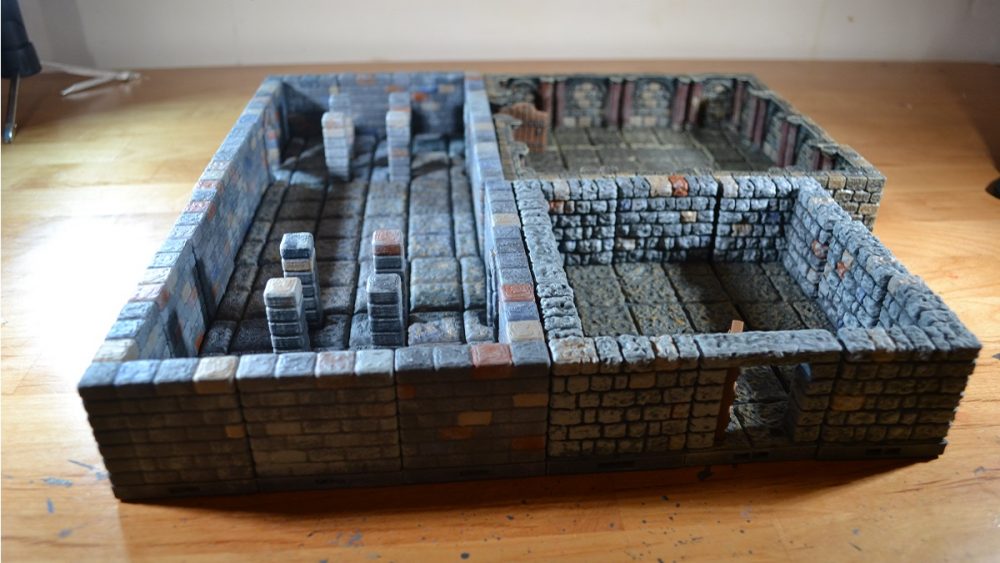Taking my D&D terrain game to the next level
So you’ve managed to get your friends together to play some D&D. It’s taken bribery, a little blackmail, and some inventive excuses to partners as to why you can’t look after the kids this weekend. You’ve got snacks. You’ve got dice. You’ve even got cool minis for everyone. But how do you take your D&D game to the next level?
With 3D D&D Terrain.
Recently I wanted to enhance my D&D sessions, so I began investigating the D&D terrain options and am pretty excited about the results.
This article is part of a series of Dungeon Master Resources for Geekdad.com. Also available are:
D&D Essentials, Lairs and Locations, Making Maps, D&D Minis
3D D&D Terrain
I’ve written previously about my adventures with D&D terrain. From using LEGO and whichever toys my kids have left lying unguarded about the house, to printing off dungeon tiles from Fat Dragon games and using the official WotC tiles, these forays into creating outstanding, fantastic locales for playing our monthly Dungeons & Dragons games have been met with varying degrees of success. Some are time consuming, some are fiddly and fragile, and some require quite formidable leaps of imagination on the part of my players. But they have all been fun and entirely suited the requirements of our gaming table.
My players have always seemed impressed with my meager attempts. However, I have always been left feeling unsatisfied. For me, there were never fireworks. The earth never shook. I wanted more.
Throughout these endeavors I have, in the back of my mind, always imagined the scenes I create as awe-inspiring. Terrible volcanoes spewing forth lava. Epic towers, 300 feet tall. Murky sewers shrouded in mist. But in reality they have fallen short. Maybe it’s because of live shows like Critical Role or Acquisitions Incorporated tainting my expectations with their beautiful dioramas and 3D maps. Maybe it’s a lack of ambition and expertise. Or maybe, just maybe, it’s because I hadn’t braved the world of 3D terrain.
So perhaps it’s time I did.
3D Starter Dungeons
After deciding to investigate the options for 3D D&D terrain I came upon a dilemma. There is an impressive assortment of options out there, with a similarly extensive price range to boot. Every week there seems to be another Kickstarter set up offering the “next level” of immersive 3D gaming terrain. But before I could dive too deep into the bubbling slough of variety, I had to decide what I was looking for.
Currently, I’m running a Dragon Heist campaign. This is a city-based story, so it made sense to focus on the options that will help that campaign the most. I also wanted to pick some D&D terrain that I could use again in the future and that would be versatile. My aim is to be able to build the set for the finale of the campaign in the Vault of Dragons.
I decided to look into the options for 3D starter dungeons. And I wanted to try a small selection of different options for a solid comparison. I was also willing to put some of my (paltry) artistic ability to the test in the process. So I picked three options: Dungeon Tiles from Endertoys, Dragonlock Starter Set from Fat Dragon Toys, and the Painted Starter Dungeon from Dwarven Forge.
It’s worth saying now that none of these options alone were going to deliver the magnificent mega diorama I was hoping for, but they were certainly the next step in reaching my goal.
Endertoys
The first set I looked at was this starter dungeon from Endertoys. 21 pieces of terrain, all 3D printed from PLA plastics designed for 25-30mm scale minis. Perfect for D&D Terrain. The pieces come unpainted, so I knew I would be putting my skills to the test and at $34.99 I thought this seemed a reasonable price for my first 3D dungeon.

Once they arrived, I got out my can of Citadel Grey Primer and began working.

I needed two coats of the primer for the color to hold and to smooth out some of the rough plastic, but once that was complete I could start on the layering and detail. I was following a basic terrain painting tutorial from YouTube, of which there are legion if you know where to look.

Once primed, I used more Citadel paints for occasional brickwork and to give some relief to the pieces: Karnak Stone, Stag Brown, Dark Reaper, and The Fang.
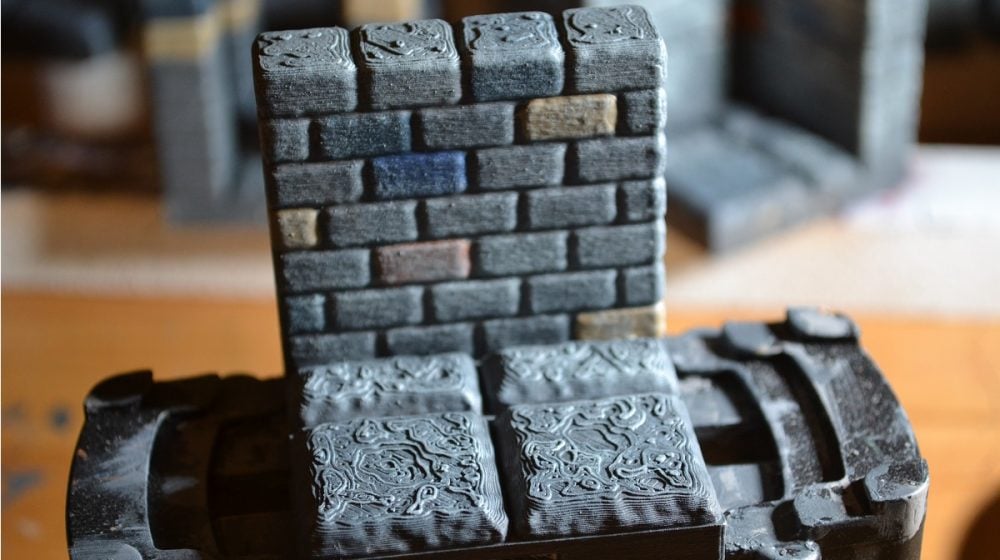
Once the initial layering was dry I used a sponge brush with Celestra Grey for sponging the brickwork and adding an aged faded effect to the stone.
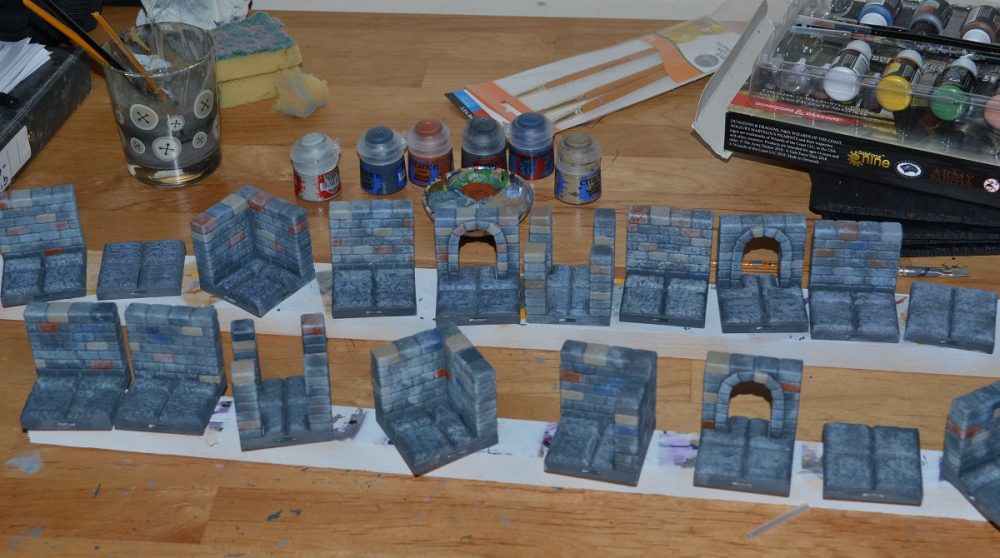
Overall these tiles are great for using as D&D terrain. The quality of the printing is consistent throughout, with minimal flashing. The tiles took the paint nicely, although it did take a couple of primer coats, but that could have been more down to my incompetence than the quality of the product. The level of detail on the brickwork is very basic and the floor tiles really show the layers of PLA plastic that the terrain is printed from, but for the price that’s understandable.
There are also lots of other sets available from Endertoys, all of which could be added to this one to enhance the versatility and create the perfect dungeon space you’re looking for. In particular this basic dungeon set without pillars, these ruined walls
, and this brick staircase
.
Dragonlock
Having seen how good 3D printing could be, I set to looking for other options. I found Dragonlock available via Fat Dragon Games. Available to a degree. In actual fact these 3D Printed D&D terrain pieces aren’t available in printed form at all from Fat Dragon Games. Instead they sell the .stl files for the sets. This means that in order to own the terrain tiles you either need to own a 3D printer, or find someone who does.
Here at GeekDad we love 3D printers and you don’t have to look far to find the latest GeekDad Daily Deals or Kickstarter Alerts for the technology. But I don’t have access to that, so instead I turned somewhere that does. The internet.
Sites like Etsy are great for finding people who can help you out in situations like this. It’s where I was able to have my custom D&D minis printed. On Etsy there are numerous sellers who have downloaded the Dragonlock files and are selling the sets, and individual tiles are very reasonable prices. For $20 you can find the starter set, complete with exclusive Dragonbite clips.
Like the Endertoys D&D terrain, Dragonlock tiles will require some paint work once received. They also have a helpful painting tutorial on their site.



One significant difference between the Endertoys and Dragonlock D&D terrain sets is the doorways. For the Endertoys, doorways are represented simply by an arching piece with a section missing where the door would be. But the Dragonlock tiles doors include the actual door piece.
Overall the Dragonlock starter set is very good. Dragonlock D&D terrain is fully modular, snap-locking, multi-level, and suitable for 28mm scale. Whilst the starter doesn’t come with as many pieces as the Endertoys set, it is very versatile and as you are usually able to find a seller who can print the additional pieces you need for very little extra cost. I found a couple of sellers who are selling extra wall and floor pieces for less than $2 each.
Like the Endertoys set, Dragonlock really showcases the versatility of 3D printing, whilst also allowing you to add your own style and creativity to the pieces. However, as these are created in a less commercial setting you may find a few more issues with flashing and print quality, depending on the material and the quality of the 3D printer used.
Dwarven Forge
My final option is the one which I was most excited about. Like many others I was introduced to Dwarven Forge via Critical Role and have often had to dab dry the saliva drooling from my chin as I watched Matt Mercer bring out his latest dungeon creation. But I have always felt the cost of owning a set of Dwarven Forge to be prohibitive. True, if I wanted to produce a mega-dungeon this might be the case, but for a simple basic dungeon room, like the ones compared above, the cost isn’t too dissimilar.
For $49 you get 19 pieces of expertly hand painted D&D terrain made out of Dwarvenite (a unique non-toxic, PVC-based compound that is cast and set like resin and is unbelievably hardwearing).
The pieces all come hand painted in far greater quality than I could ever achieve. You even get a small piece of treasure for adventurers to find in your dungeon.
Like the other sets, the pieces are fully modular and can be assembled in any formation you like. But unlike the sets from Endertoys and Dragonlock, these tiles do not connect through snap-lock systems. Instead each pieces houses a tiny magnet in its base and is designed to sit on a metal terrain tray which keeps them all in place. The terrain trays are sold separately.
Overall the quality of Dwarven Forge D&D terrain makes the extra cost all the more worthwhile. The only problem is getting hold of it. The store sells out quickly, but they do hold an annual Kickstarter campaign to launch their latest range. Last year it was the Caverns Deep campaign, which raised an incredible $3,300,000 with over 3,000 backers. This year’s campaign is Hellscape and launched on 16th June and is sure to be as popular among D&D fans new and old.
Modified and Combined
Once I had all three sets together I really wanted to maximize their full potential and create one large dungeon section using all the pieces. But first I had to work out how to hold them all together. Each snap-lock system is different, so the Endertoys and Dragonlock pieces don’t latch together and the Dwarven Forge are magnetic.

To get round this I found some self-adhesive magnets which I attached to the base of the 3D printed tiles and then used a large magnetic sheet as a terrain tray which worked perfectly.
Overall
Whichever option you go for, there’s no doubt that using 3D D&D terrain adds an extra element to your games that your will blow your players away. When I first showed my D&D group the dungeons I had been collecting and working on, they were amazed at the versatility, quality, and affordability of the options out there.
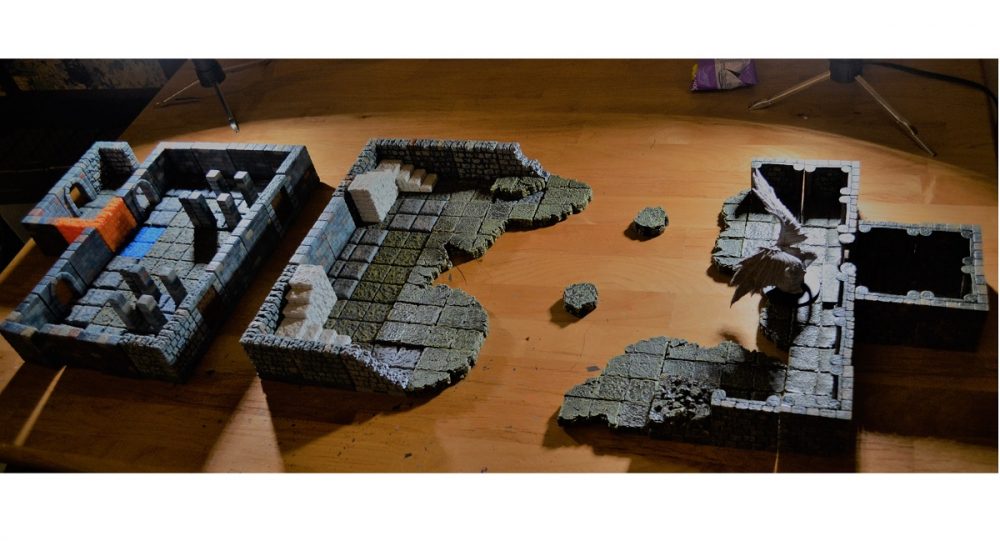
For the highest quantity, Endertoys gets you the most for your money. For affordability, Dragonlock tiles can’t be beaten. And for sheer quality and wow factor, Dwarven Forge is the way forward. But with a little imagination and creativity you can combine all three to create some really fantastic locations and exciting dungeons for your players to explore.
They might not be the devastating lavascapes, the impossible towers, or the underdark caverns I have been dreaming of, but the 3D dungeons created from these fantastic D&D terrain sets take me one step closer.
